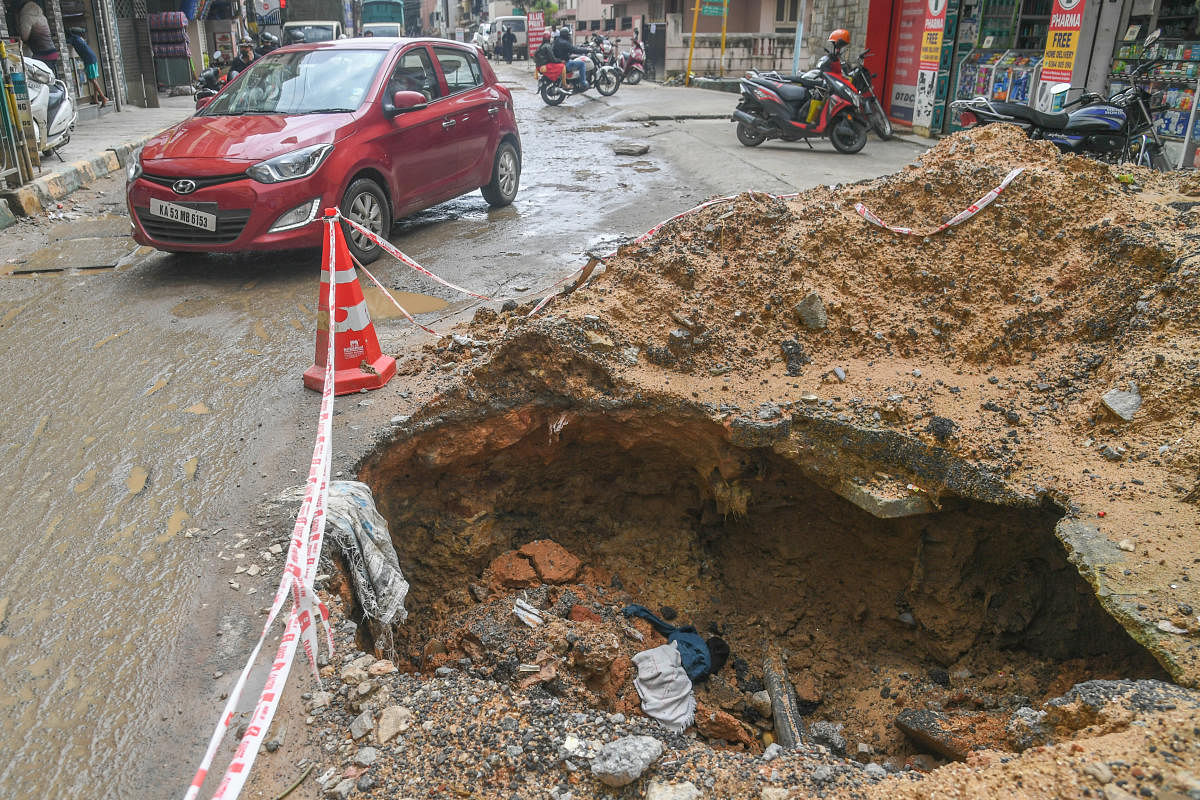New Delhi must perhaps be the only national capital where visiting heads of state have to bring their own fresh air to breathe. US presidents who have visited India in recent years are reported to have had their Delhi hotel re-equipped for this purpose.
It is also perhaps the only capital where the carefully chosen and sanitised routes for the local visits of the VVIPs had to be changed at the last minute and detours re-planned to avoid the huge potholes that sudden rains created on the hastily patched-up main roads.
My focus today is on potholes that plague many major cities and when I questioned a retired senior roadways engineer on how to remedy this problem, his reply with a wry smile was “Oh, potholes; plug the loopholes!”
Karnataka High Court has recently been severely reprimanding the BBMP for its pothole mismanagement. It has threatened to send the BBMP engineers into imprisonment if the neglect of their responsibilities continued. This threat is serious and overdue. Some 4,775 road accidents resulted in India from potholes in 2020; 2021 apparently saw 3,565, a gleeful reduction of about 25%.
Deaths from pothole accidents are reported virtually every day but official statistics, national and Bengaluru, report none directly attributable to potholes. Deaths occur when two-wheelers in particular, with rider and pillion, have to manoeuvre their vehicles ever so slowly, often paddling with their feet, and drop into potholes or are pushed into them by four-wheelers themselves trying to avoid potholes.
These deaths are also recorded as road accidents and very seldom find the right classification in statistics. Government agencies such as municipal corporations bear no responsibility for their failure to maintain their roads and are seldom held to account or hardly ever offer compensation.
It is well known that roads, concrete or asphalted, are homogeneous stretches of many prescribed layers of different materials, compacted and set into the soil in a prescribed depth. Such roads laid as prescribed reportedly stay intact for at least five years.
A superb example of the professional road–laying exists in Kerala. Way back in 2006, Malaysian contractors RBM laid a concrete road on the Kullappilly-Shoranur stretch in Palghat District. It was sheer joy to drive on that road and the latest reports are that the road still remains in excellent condition.
Of course, the tragedy is that the foreign contractors were unwilling to “negotiate” with key local players and so struggled to get their bills paid by the State government which, I am told, merely delayed payment on some pretext or another.
Whether it be Delhi, Mumbai or Bengaluru, monsoons are annual features and it is obvious that the weak roads would break up. There is hardly any adequate preparatory work. When the rains begin, roads break up and potholes appear. There is public outrage when accidents begin to happen and the government explodes into activity. It orders the Corporation or the relevant department to rectify the situation immediately or within a number of impractical days.
Patchwork starts forthwith and lorryloads of road-building material are dumped into the craters and rolled or tamped down. Reports are submitted to say that the mission had been completed successfully. The road scene changes and instead of craters, we see them turned into humps. Vehicles then do not fall into potholes but are compelled to “hiccup” their way over the uneven surfaces, craters reappear after another spell of heavy rain.
Very recently Bengaluru media reported a petition submitted by government contractors to the Prime Minister seeking refuge from threatening demands of sections of local administration, a quite high level, for “goodwill” payments of up to 40% of the contract value.
Uniform pattern
This is amusing as the same contractors had earned a lot of goodwill in the past at a lower cost and did not realise that inflationary pressures affect every financial transaction. A very senior technocrat, now retired, very directly involved in highway construction at Central and State levels for many years, once explained to me how there was a uniform pattern in the award of road-building contracts particularly in States.
Every civic authority has a list of favoured contractors who always manage to get contracts by virtue of tender specifications framed suitably. My friend himself had difficulty in managing to stay clear knowing that his recorded reservations would be overruled by higher-ups and tenders finalised.
Goodwill apparently commenced with the first advance paid to contractors and then a schedule would be agreed for future payments. Over a period of time, goodwill began to cost more and then a new scheme was devised. The contractors were tacitly allowed to recover their higher goodwill costs by diluting prescribed construction standards. Pre-payment inspections, quality control and audit remained on paper.
As and when the roads broke up, guarantees required for the durability of the roads were not invoked in the following years. Premature damage was rectified by the same contractors and they would be paid again either from emergency or road maintenance funds. Goodwill would then go through yet another cycle. Moral of the story: when potholes appear so do loopholes.
Buildings catch fire, traffic rules are defied, flyovers and bridges collapse during construction and people die in each of these. Enquiries are held and conclusions are forever the same. There are laws intended to prevent all these tragedies but they are observed more in their breach. The reason for this is too well known to need repetition.
As for solving the pothole problem, my engineer friend says “It is easy to prescribe but difficult to enforce. Plug the loopholes, make someone accountable, then that will plug the pothole problem”.
